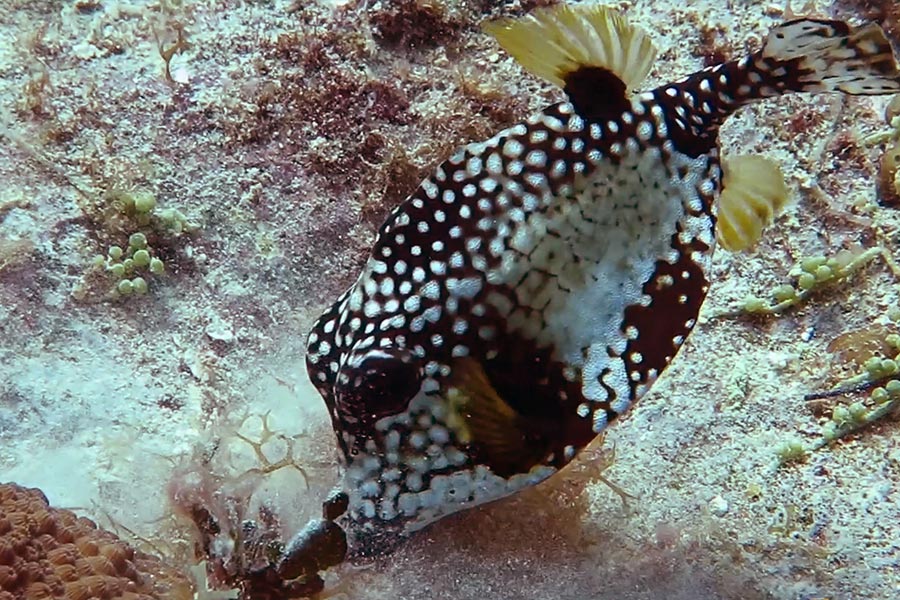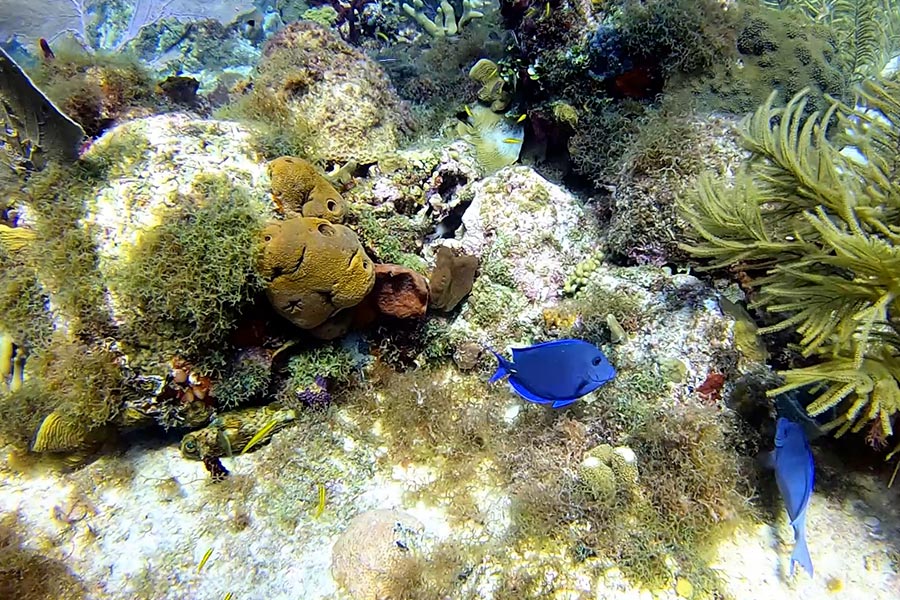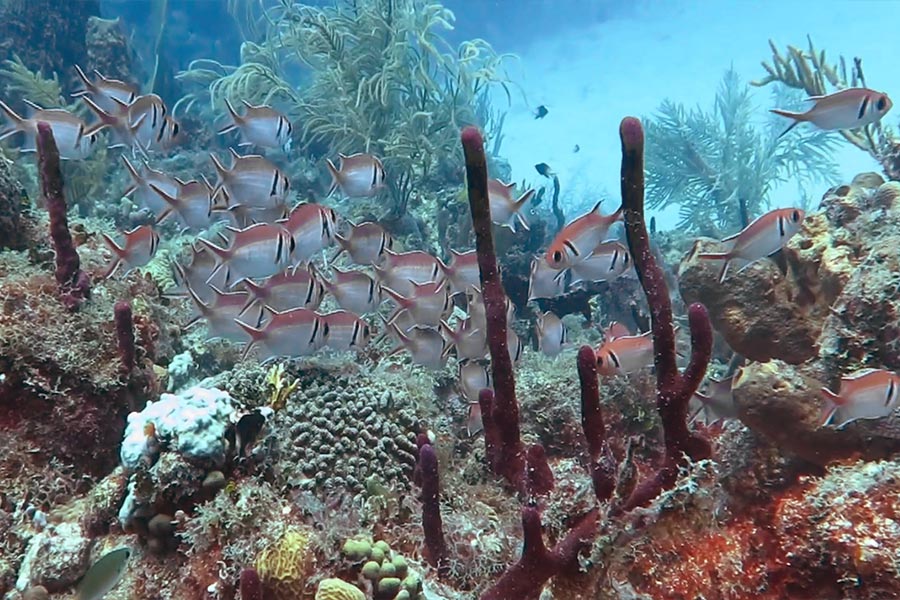3. For the Dominican Republic Reef Explorers in La Romana
Along the southeast coast of the Dominican Republic, an impressive expanse of sugarcane plantations stretches out, encompassing some of the dreamiest beaches. That’s La Romana. What used to be only a sugarcane-producing region is now also a tourist destination prized for its crystal-clear waters, lush tropical forests, and endless entertainment options.
Reefs of the Dominican Republic on Catalina Island
- Location: La Romana
- Depth: 5 meters (16 feet) – 43 meters (141 feet)
- Experience Level: Open Water Diver – Advanced
If you’re seeking an underwater paradise teeming with life and mystery, allow me to introduce you to the small island of Catalina – a dream location for diving enthusiasts with two exceptional dive sites.
The Catalina Wall: Just off the northern tip of Catalina Island, an underwater wall stretches majestically, descending to depths as great as 140 feet (43 meters). Along about 500 meters, you’ll witness underwater life at its best and be greeted by dense conglomerates of corals.
The Leeward Reef (El Acuario): It gradually slopes from a seaweed meadow to a depth of 5 meters, where a system of ridges and grooves unfolds, creating an otherworldly sensation. As you explore, you’ll reach a depth of 14 meters, surrounded by a diverse landscape of corals and fish that will leave you in awe. Next, you’ll discover a broad sandy area dotted with patches of coral, home to a rich diversity of marine life – even frogfish, squid, and seahorses will welcome you underwater!
Los Cocos Coral Reef
- Location: La Romana
- Depth: 12 meters (40 feet)
- Experience Level: Open Water Diver
This reef is situated in the western area of the Catuano Channel. Here, you’ll be greeted by the waters of the channel, which are brushed by nice currents generated by tides and wind, giving rise to a unique underwater community. These welcome currents have shaped a vibrant and diverse ecosystem. Prepare to encounter sponges that can reach astonishing sizes of up to 1.2 meters and octocorals up to 2 meters.
Bayahibe Reef
- Maximum Depth: 40 meters (131 feet)
Bayahibe, a picturesque fishing village, is now one of the most popular diving destinations in the Dominican Republic for both beginners and experienced divers.
Merely 800 meters from the coast, the enchanting Bayahibe Reef unfurls before you, a part of the impressive Parque Nacional del Este. This reef is like the underwater playground you’ve always dreamt of exploring. It features a precisely defined system of ridges and grooves that rise up to 2 meters high.
Marine experts have revealed that the coral cover is 34%, with 25 different species and 37 species of sponges.
Wreck Dives: 2 Wonderful Artificial Reefs in the Dominican Republic
San Jorge (Saint George) is a highly popular dive site for divers of all skill levels, located about 800 meters or 0.5 miles from Coral Point Diving. The wreck is an artificial reef in the Dominican Republic with a depth ranging from 25-35 meters, or 82-115 feet. The submerged ship is adorned with colorful coral and is a habitat for various marine life, including eagle rays and barracuda. There’s even a rumor of a massive green moray eel residing in the chimney.
Princess of the Atlantic / Atlantic Princess: The ship, which used to carry tourists, sank in 2009 and now rests just 40 feet (12 meters) below the water’s surface. The shallow waters surrounding the wreck are home to a diverse range of marine life, including parrotfish, small crabs, and rays, as well as a variety of corals and other marine species.
Isa Saona: Paradise
- Location: Bayahibe
- Depth: 9 meters (30 feet) – 40 meters (131 feet)
- Experience Level: Open Water Diver – Advanced
Saona Island, with an area of 110 km², stands out in the Cotubanamá National Park and boasts one of the most significant reefs in the Dominican Republic. The currents feel like a welcome breeze and the coral reefs are bursting with life. Saona Island also serves as a vital turtle nesting site.












